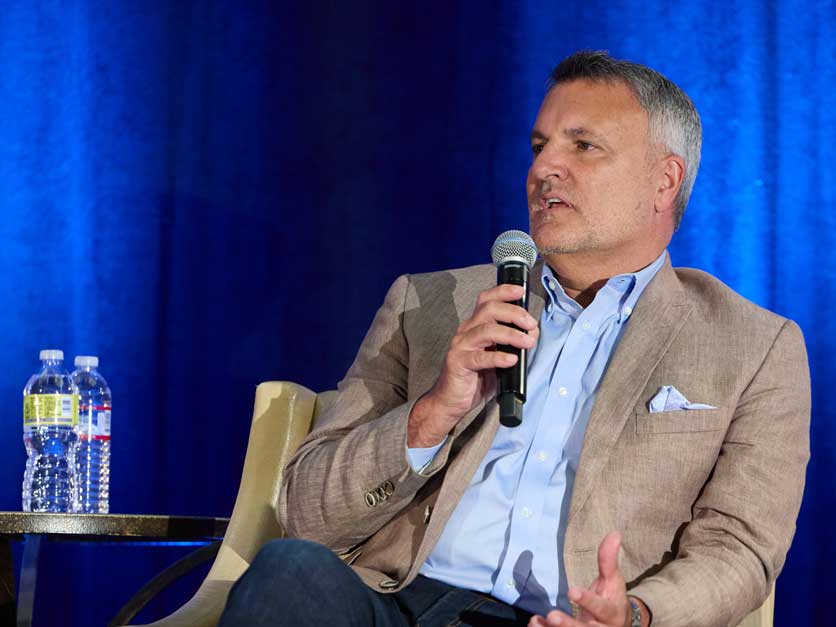The California Air Resources Board is reopening its rulemaking on the Low Carbon Fuel Standard, sparking new debate over the role of dairy digesters in combating climate change. Environmental justice advocates have pushed the board to drop its credits for digesters, calling the incentives a subsidy for industrial farms that allow them to grow larger and pollute disadvantaged communities.
The arguments have gained traction with board members, who will hold the first hearing next week on updating the LCFS to limit the role of digesters and other fuel sources.
At the cost of more than $500,000 a year, CARB has made permanent its Environmental Justice Advisory Committee (EJAC). Led by prominent environmental interest groups, the committee last week handed CARB a list of requests for the LCFS proceedings. It hopes to rapidly phase out crop-based feedstocks like ethanol. Yet the issue that gained the most debate during an EJAC workshop was a request to eliminate methane credits for digesters next year, along with any other potential pathways for dairy and livestock producers to gain credits.
EJAC members hope to replace the LCFS incentives with policies that instead favor regenerative agricultural practices.
The advocates gained academic legitimacy for their arguments by commissioning a new study from a Stanford University researcher. Michael Wara, a legal scholar who directs a climate and energy policy program at the Woods Institute for the Environment, applied CARB modeling to examine potential LCFS air quality impacts to communities. He concluded that CARB should not continue LCFS credits for dairies until it completes a full lifecycle analysis of the sector, echoing appeals from environmentalists.
“CARB needs to dramatically improve the measurement of methane emissions from agriculture,” said Wara. “We're not going to know where we are, whether we're on track and whether we have achieved the target.”
California set that goal in Senate Bill 1383 in 2016, with a pledge to cut methane emissions from livestock 40% by 2030. Environmental groups have argued the state will not meet that mandate. But independent researchers at UC Davis have found dairy farmers, owing to the rapid adoption of methane-capturing digesters, are on track to surpass that goal. The nonpartisan Legislative Analyst’s Office has found digesters to be the most cost-effective tool for reducing potent greenhouse gas emissions, a point many industry advocates have stressed.
 Michael Wara, Stanford University
Michael Wara, Stanford UniversityWara also selected in his study to drastically drop hydrogen credits for digesters, favoring the more expensive option of producing hydrogen by splitting water molecules using solar and wind power. With biofuel feedstocks, his team worried about incentivizing devastating land-use changes, specifically to carve out plots in the Amazon rainforest to grow soy.
Wara argued that cutting LCFS credits for these fuel sources would be consistent with CARB’s priorities by reducing refinery pollution at biofuel plants and avoiding dairy industry consolidation. He urged the board to focus LCFS credits instead on electrifying the transportation sector and electrolytic hydrogen.
While the workshop last week was the first opportunity for board members to see Wara’s results, it quickly captured their attention. Dean Florez, a Senate-appointed board member who spearheaded CARB’s ban on open agricultural burning, is hoping to have a more concentrated discussion on “the dairy methane issue” in CARB’s hearing next week. He argued that scaling up digesters “is exactly what we don’t need in the Central Valley.”
“I was super happy to hear Mike Wara’s talk about agriculture's push and its impact on the overall plan and what we need to do with agriculture,” said Florez, who took issue with the narrow focus of the LCFS program. “We chase carbon and we don't chase the source pollution as much.”
Susan Shaheen, a UC Berkeley engineering professor serving as the board’s automotive member, raised red flags over discrepancies in data, arguing the overall herd size in California and its impact on emissions are unclear.
“I'm seeing studies and data that are very contradictory,” said Shaheen.
The EJAC priorities align well with a new economic impact assessment CARB released this month, according to Gideon Kracov, who serves on the CARB board as well as the Southern California air district, which is proposing an aggressive air quality mandate for seaports.
CARB’s assessment evaluated the regulatory impacts of making the LCFS credits more stringent to reflect the Newsom administration’s sales bans on gas-powered cars and diesel trucks. Staff are proposing to phase out methane crediting entirely by 2040 and will present the final recommendation to the board in 2024.
Don't miss a beat! Sign up for a FREE month of Agri-Pulse news! For the latest on what’s happening in agriculture in Washington, D.C. and around the country, click here.
Kracov asserted that CARB fosters an exceptionalism for dairies through the LCFS and argued the agency must enact new regulations on dairy methane emissions, which CARB can do next year if the agency finds dairy farmers and livestock producers are not meeting the SB 1383 goal.
“We pretty much regulate every other significant source of methane in our state — either directly or they have to pay expensive prices through cap and trade — but not the dairy emissions,” said Kracov.
 Michael Boccadoro, Dairy Cares
Michael Boccadoro, Dairy CaresMichael Boccadoro, who leads industry efforts on methane as the executive director of Dairy Cares, cautioned that the role of biomethane from cows in LCFS is “a tiny, tiny, tiny slice of the supply mix in California,” though it is a huge part of the state’s effort to cut methane emissions.
“If the state is going to achieve its short-lived climate pollutants goals, we have to reduce dairy methane — but that can't happen without digesters,” explained Boccadoro. “They're accounting for 90% of the reductions we've achieved today.”
He charged that Wara’s presentation on cutting LCFS credits glossed over the implications for the state’s 2030 goals and that many of the EJAC arguments at the hearing were not factual.
“Dairy families have been doing exactly what the Legislature asked them to do. They're investing in these projects. They're committing their families to these efforts,” he said. “And EJAC wants to pull the rug out.”
Sam Wade, who directs public policy at the Coalition for Renewable Natural Gas, was disappointed that his organization has been promoting LCFS nationwide only to see it “under attack here at home.” He pointed out that EPA has supported digesters for more than 20 years and that the agency highlights California’s LCFS as a success story on its website. The state’s digester program, he added, took more than 10 years of input from academic experts, along with extensive public outreach from CARB and CDFA and “smart legislation” with SB 1383.
“CARB’s LCFS program has been successful because it incentivizes innovation and convinces private capital to invest in effective projects across a wide variety of fuel pathways,” said Cassandra Farrant, a public policy director at Amp Americas, which partners with dairy farmers on renewable natural gas projects. “Private capital can only continue to invest in and operate methane abatement projects if we have a stable regulatory environment that includes methane crediting.”
Farrant noted that just the discussion of changing LCFS has already halted new investment in projects.
For more news, visit Agri-Pulse.com.


